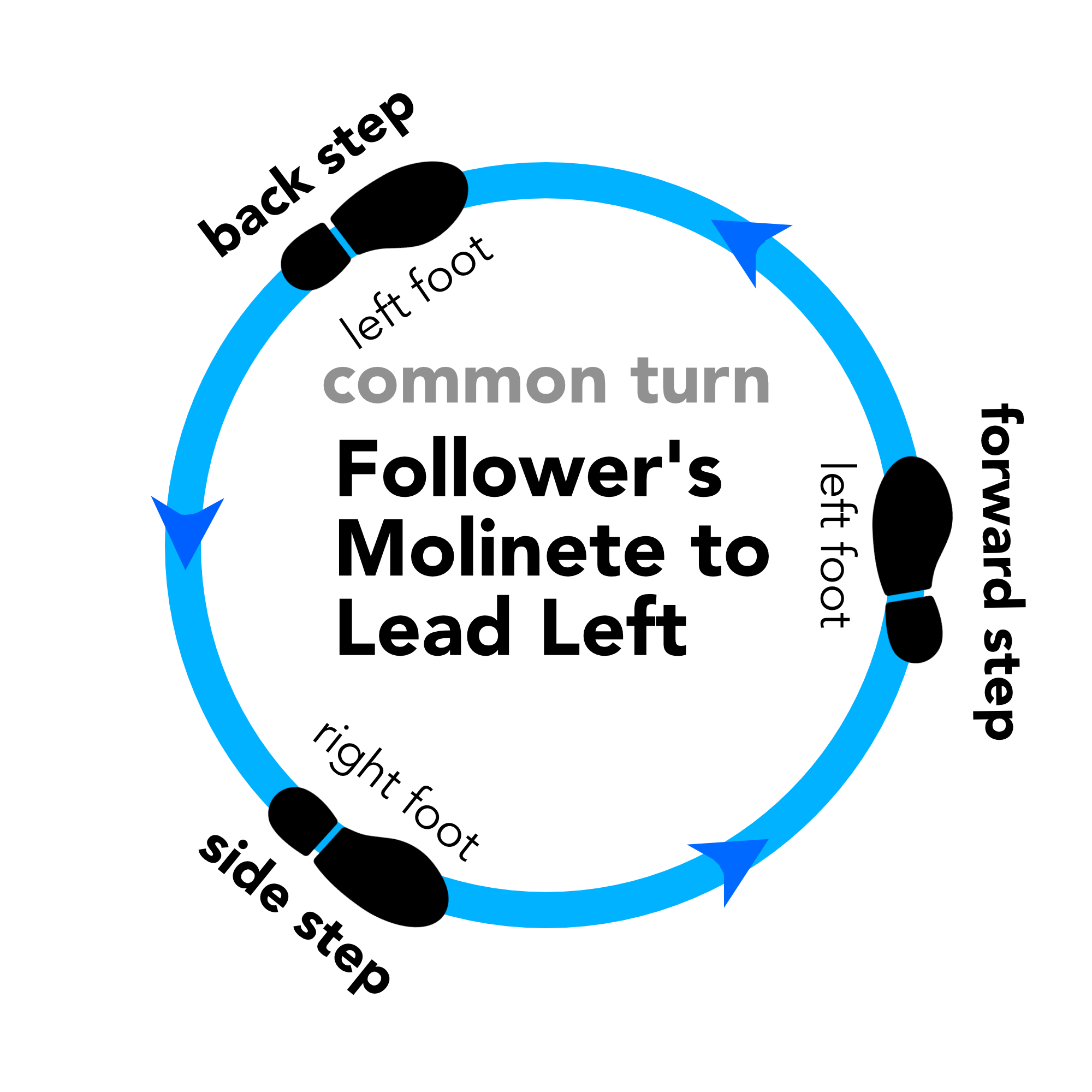The Follower’s Molinete to the Lead’s Giro is a Type 3 Turn.
Most of you probably don’t understand what that statement means or why it’s important. You probably have only heard of the ‘Molinete’. There is a whole structure there that never gets talked about unless you’re doing a weekend workshop and these ideas are laid out for you so that you explore the possibilities. That is assuming that the teacher even is aware of this stuff. Most are not. So what is that structure is called ? It’s called the Molinete/Giro Structure. It is only 1 of 8 Types of Common Turns used in Argentine Tango.
To be fair there are 2 other variations of this turn such as it’s mirror -> the turn the right vs. what is commonly done the turn the left. Still another variation which is way cool is the INVERSION of this turn where it’s the Lead’s Molinete to the Follower’s Giro! Which is almost NEVER done, sadly. Why Sadly ? Because a.) It’s loads of fun. b.) If performed regularly it would inform a lot of Male Leads to NOT use their arms to accomplish their goals in the other variations! and c.) It would force a whole swath of Male Leads to actually learn the benefits of Applied Disassociation and what it can do for them. But I digress.
The graphic below is from the forthcoming video of the Molinete/Giro Structure on the Follower’s side of the Molinete. For which I’m having to generate all new graphics for. ![]() Even though I show the structure on screen from 3 different camera angles, it’s still good to have the reference material right there on the screen.
Even though I show the structure on screen from 3 different camera angles, it’s still good to have the reference material right there on the screen.
This is the Follower’s footwork for the turn to the open side of the embrace or rotating Lead Left (hence the arrows denoting direction). The turn assums the common strucure > Back/Side/Forward or BSF for the Follower. Typically this turn is done from one of 2 possible in-bound structures — 1.) Type 3 Ochos or “Traveling” Ochos. or 2.) A 2 Track Type 1 Parallel System Walk. You can invoke a Cross System Walk such as a Type 2 Walk, or Lazy Ochos. However, doing so creates a bit of confusion. So typically the Lazy Ocho is paired with the Milonguero Turn, whereas the Traveling Ocho is paired with the Molinete/Giro Structure. If you’re curious about the transitional elements and how to mix and match these ideas then you can visit tango topics and look at “Ocho Transitions” in the archive.
I point all of this out because this particular video is not an easy video to just churn out. I go deep in the article and the video.
If you’re curious as to what the other 7 types of turns are. Funny you should ask that question, because I have that answer right here > https://tangotopics.com/eight-turns/

